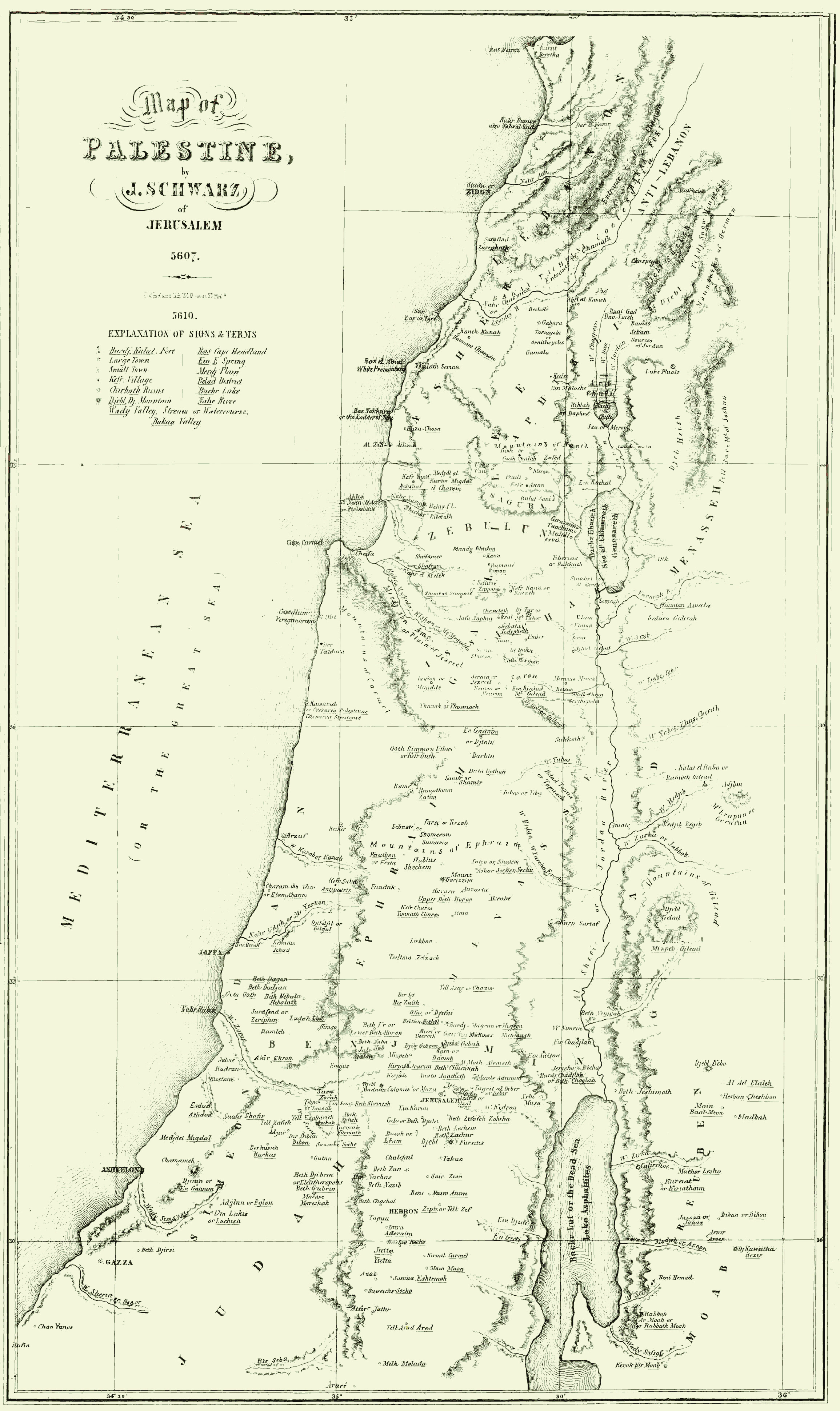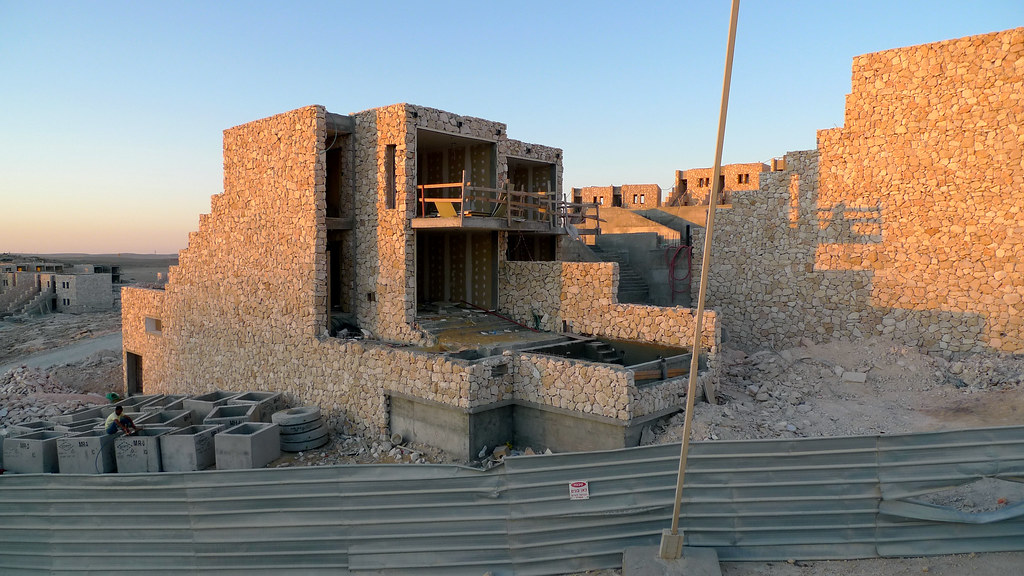Mitzpe Ramon (Ramon's Outlook)
Population: 5600
Lat: 30.612947464, Long: 34.8021125793
"A" marks the spot
 We live in Englewood, NJ and are making Aliyah, moving to Mitzpe Ramon, Israel. To many people this just draws a blank reaction; they have no idea where Mitzpe Ramon is. Others react variously depending on their age. Older people tend to double-up in disbelieving laughter. (Joke: "I am going to Mitzpe Ramon." "Why, did you loose something?") Younger people, especially the younger married men we know say something like, "I'd go with you myself, except my wife would divorce me." These contrary responses reflect the dual nature of Mitzpe Ramon's past: at one time a "dumping ground" for Israel's "less desirable" immigrants, "nicht unsere" (not us) as they may have been called by Israel's founding elite of white, Ashkenazic, European Jews and its present as a growing desert, eco-tourist center.
We live in Englewood, NJ and are making Aliyah, moving to Mitzpe Ramon, Israel. To many people this just draws a blank reaction; they have no idea where Mitzpe Ramon is. Others react variously depending on their age. Older people tend to double-up in disbelieving laughter. (Joke: "I am going to Mitzpe Ramon." "Why, did you loose something?") Younger people, especially the younger married men we know say something like, "I'd go with you myself, except my wife would divorce me." These contrary responses reflect the dual nature of Mitzpe Ramon's past: at one time a "dumping ground" for Israel's "less desirable" immigrants, "nicht unsere" (not us) as they may have been called by Israel's founding elite of white, Ashkenazic, European Jews and its present as a growing desert, eco-tourist center.So, what's the story with Mitzpe Ramon?
Mitzpe Ramon was built in 1950 as a temporary town for the workers building Route 40, connecting Beer Sheva with Eilat on the Red Sea. Even in 2009 it is physically remote, 50 miles south of Beer Sheva and 85 miles north of Eilat, with only a few large military bases nearby. A portion of the town's population today is comprised of military and civilian workers at the nearby military bases. It sits in the high desert of the Negev at 800 meters elevation (almost as high as Jerusalem at 900 meters). If you picture the triangle of land that composes Israel's southern Negev, Mitzpe Ramon sits at its geographic center. But the air is dry and a continual, freshening breeze blows there (sometimes quite stiffly), making even the hot desert afternoons bearable. In the winter this same wind makes it quite chilly.
Mitzpe Ramon's most distinguishing feature is that it sits at the rim of the largest geologically created crater in the world, Ramon's Crater (Machtesh Ramon, in Hebrew). The crater is about 650 feet deep from its rim at Mitzpe Ramon, and it extends some 25 miles in length and 5 miles in width. You could fit about 4 Manhattan Islands into its basin. (Craters can be created by impact [meteor-created] or volcanic action, or through geological erosion. Mitzpe Ramon's oblong, irregular shape reflects its creation by geological forces, rather than by impact or volcanic action, which tend to create circular craters.)
Ramon's Crater is the largest nature preserve in Israel, and Mitzpe Ramon is the visitor center for the nature preserve. There are two hotels and a large youth hostel in the town, and many Israelis start their tours or treks of the Crater in Mitzpe Ramon, or stop there to buy food and gas on their way to Eilat. There is a very upscale hotel currently under construction in Mitzpe Ramon, sitting right on the Crater's edge. (Autumn 2009)
Units of Fancy New Hotel Built on the Rim of Ramon's Crater
I have read that the opening of Route 90 down Israel's western border with Jordan has siphoned off alot of traffic from Route 40 to Eilat from the north of Israel, hurting tourism in Mitzpe Ramon, where tourists used to stop and visit the crater on their way to Eilat. But the rise of interest in eco-tourism and all things Green seems to be restoring the flow of tourists to Mitzpe Ramon. This is the source of the younger men's envy at our moving to Mitzpe -- if you are into hiking, biking, or running Ramon's Crater is one of the great places on Earth to do it, and Mitzpe Ramon is just a shout from the crater's edge.
Because of its location in the High Desert and its remoteness from urban centers, the air in Mitzpe Ramon is particularly clean and pure. It also enjoys some of the darkest skies anywhere in Israel. Thus, Israel's largest research astronomical observatory, the Wise Observatory, is located on a small plateau just 3 miles from the center of town. Unfortunately, growth and development of the town seems to be degrading dark sky conditions, and I do not believe the sodium vapor lights even have sky shields on them, quite surprising considering the proximity of the observatory. Nonetheless, Mitzpe Ramon is a prime location for star gazing and meteor watching, bringing out large crowds in the summer when the Perseids meteor shower reaches its peak in early August.
Correction: These are actually the domes of the IAF radar facility just outside of Mitzpe Ramon. But they look alot like the domes of the Wise Observatory which lies high atop a mountain behind Mitzpe Ramon.
Although Mitzpe Ramon enjoys its new status as a growing eco-tourism destination, for much of its history it was a kind of "dumping ground" for some of Israel's "undesirable" Olim: First the dark-skinned Sephardic Olim from Morocco, later the Black Hebrews of Chicago, then the Russians. Much of the housing in the old part of town was government supported and poverty was high, due to the remoteness of the town. More recently the government has started selling off this government supported housing to its renters and investors. There is a market in the center of town, a Field School, about which I know little, and a B'nai Akiva Yeshiva moved to Mitzpe Ramon about 10 years ago from Dimona. There is also a Chabad that is building a new center. The Yeshiva has certainly changed the character of the town. There are about 150 families who belong to the Yeshiva community, and you see them and their children everywhere you go.
Whether observant or not, the town, I assume like many smaller towns in Israel, is quite traditional. As Shabbos starts, everything closes down, cars and buses stop running, stores close, and all becomes silent, with only the desert wind and the hum of air conditioners heard. It is really quite amazing.







No comments:
Post a Comment